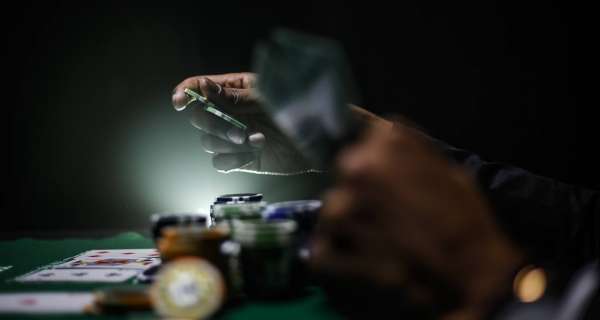In daily life, they are usually earmarked as either high functioning users, closet users, or secretive users and they make use of covert methods to maintain their habits.
Types of Covert Users
High Functioning Users
High-functioning users are known to overindulge, but appear to have full control over their habit. They maintain their daily responsibilities and live apparently successful lives. On the surface, they seem trouble-free and able to consume large volumes of alcohol or drugs without distressing consequences.
Closet Users
Closet users indulge behind closed doors; alone and without exposing their feelings to outsiders. Common examples are teenagers and women who fear repercussions from family or society. Others are public profiles who dread career setbacks, or archetypes who are expected to set an example to others.
Secretive Users
Secretive users are mostly people with known substance usage problems who want to avoid being spotted and confronted about it. They hide their substances, use it surreptitiously, try to camouflage the obvious signs, and dispose of the evidence afterwards.
Shared Characteristics
Though there are fundamental differences between them, all covert users share these main characteristics:
- They hide their true feelings, compulsions or motives.
- They lead double lives and keep up misleading appearances.
- Their behaviour can lead to misplaced trust that can harm others.
- They evade help for their problems until significant damage occurs.
Good and Bad Resources
When substance abuse is discussed, the word “resources” usually refers to providers of healing and caring, and methods to stop the harm. However, intemperate users also have other, destructive resources available – these resources postpone healing and contribute to their gradual decline.
Destructive Resources
Users who over-indulge in toxic substances often use these methods to sustain their behaviour:
Social Manipulation
Exploiting social events: Over-prioritising invitations to parties. Abusing festive occasions. Arranging own events and parties to create opportunities for over-indulging.
Creating misperceptions: Selectively admitting certain faults to create false impressions of being aware, honest, reasonable, forthcoming and trustworthy.
Playing party games: Starting games that have “bottoms-up” penalties and rewards. Boasting about drinking prowess and challenging others to drinking them “under the table”.
Creating ambience: Using charisma, amusing stories, music, etc., to create an amiable atmosphere for over-indulging.
Pre-planning of binges: Creating plausible opportunities to be alone for extended periods, in order to binge without detection or interference.
Co-dependents and Enablers
Indoctrinating family members, intimate partners, friends, co-workers and acquaintances, or exploiting their goodwill, in order to obtain supplies, protection and caring while binging.
Inventory Control
Stringent monitoring of supplies of their substance of choice, and timely replenishment, with backup supplies to avoid running out of stock unexpectedly.
Illegal and Fringe Suppliers
Illicit networks: Building a private index of unlicensed vendors, shebeens, bars and pubs where supplies can be obtained when legal entities are closed.
Conspiracy networks: Building circles of friends, who are co-users, for obtaining emergency supplies and for support in times of trouble.
Legal club memberships: Becoming a member of social clubs solely for the purpose of accessing alcohol after normal trading hours.
Licensed restaurants: Visiting licensed restaurants, ostensibly to eat, but in reality only to obtain alcoholic drinks after hours.
Furtive brotherhoods: In some cities, there are informally designated areas where problem users congregate at certain times, for example Sunday mornings, to share, sell or swap what they have.
Financing the Habit
Controlling the finances: Exercising sole control over all household finances, to guarantee unfettered access to funds for supplies.
Hiding money: Stashing money in secret hiding places to ensure others do not remove it while the user is sleeping or otherwise incapacitated.
Borrowing: Maintaining a good reputation as a borrower who repays loans from family, friends, co-workers, micro and loan sharks. Lying about the reason for a loan.
Selling: Offering their own or someone else’s goods to pawn shops, second hand goods shops or other potential buyers at tempting prices to obtain quick cash.
Stealing: Pinching money from family and friends. “Borrowing” accessible funds from employers without permission, often with the unfulfilled intention of replacing it later.
Doing crime: Shoplifting from shops and liquor stores. Committing any type of fraud or robbery to obtain supplies or funds for it.
Secrecy and Tactics
Trips and detours: Undertaking trips for routine household purchases, but with a detour to buy stealthy supplies from a liquor store or drug vendor on the way.
Business lunches: Rationalising that a client or business associate must be wooed, but actually only interested in having justifiable drinks at lunch time.
Coded language: Using unique slang names and phrases for drugs in front of others to prevent them following your conversation with other users and street vendors.
Secret hiding places: Hiding substances in gardens, garages and other places to prevent confiscation. Drawing secret maps to find it again. Replacing contents of innocent looking containers with alcohol or drugs.
Hiding in plain sight: Carrying alcohol or drugs in small containers, common medication boxes, make-up pouches, etc., when going out.
Camouflage clothing: Wearing long sleeves to hide injection needle wounds. Wearing large jackets with inner pockets for somewhat bulky alcohol containers.
Disguised procedures: Pretending to do ordinary household chores with the primary goal of being out of sight and using drugs or alcohol without being seen.
Furtive use: Using alcohol or drugs at work, when and where others can not see it. Frequently excusing themselves from conversations to visit the bathroom to get a fresh “fix”.
Isolation: Feigning illness, fatigue, disinterest, or not answering the door bell or phone in order to have a time of privacy for using.
Masking: Using chocolates, pickles, cheese, mouthwash, toothpaste, medicine, etc., to mask the smell of alcohol or vapourised drugs on the breath.
Increasing the Effect
Using before and after parties: Having a fix at home before leaving for a party, to ensure you are fortified when you get there. Using more when you arrive back home.
Avoiding or reducing meals: Alcohol is absorbed more quickly on an empty stomach. Users often postpone meals. They usually drink while preparing meals, and may even lose interest in cooking when halfway through it.
Mixing drugs: When some drugs are mixed or interspersed with alcohol, the impact of the combined drugs are more intense than when they are used separately.
Using Alternatives
Substitute drugs: If a specific drug is unavailable, a user may opt for another type of drug, or alcohol, to suppress their craving.
Medication: Some users believe that OTC and prescription drugs are less ominous than “hard” drugs and therefore justifiable.
Household substitutes: Some mouthwashes and other household items contain high concentrations of alcohol or intoxicating fumes and may be used in desperation.
DIY Recovery Methods
Medication and supplements: Users often rely on rehydration medication, vitamins and other supplements after over-indulging. It usually helps, but it’s not a quick fix.
Food and beverages: There are numerous “miracle” recipes for overcoming hangovers. Most are ineffective, but some contain natural ingredients (vitamins, minerals, enzymes) that help with recovery.
Water and sleep: Drinking lots of water and sleeping to allow the body to recuperate, is a good way to overcome withdrawals (unless it’s very severe, when a medical detox may be necessary).
Recovery shots: When the after-effects kick in, some users need a “morning after” fix, and sometimes furtive shots during the day – if someone is affected this way, then rehab treatment is overdue.
Arguments and Denials
Arguments: Most compulsive users are constantly pondering and formulating arguments and tactics to justify themselves. It’s usually a waste of time for the average person to argue with a seasoned user.
Manipulation: As part of their defenses, users can be great actors. Anger, joking, scornful dismissal, deflection, feigned fatigue, and a host of other acts can be conjured up by users.
False promises: When their other defenses fail, users often make false promises to reduce their intake. They may lie about the severity of the problem and overestimate their own ability to heal themselves.
Resistance: Many users resist recovery treatment with denials, threats and false promises. They have an arsenal of ready-made assertions. Intervention is often needed to get them into detox and rehab.
Disclaimer: This publication provides general information for broad public audiences. Individuals are required to consult qualified health and/or legal professionals for personal advice.














